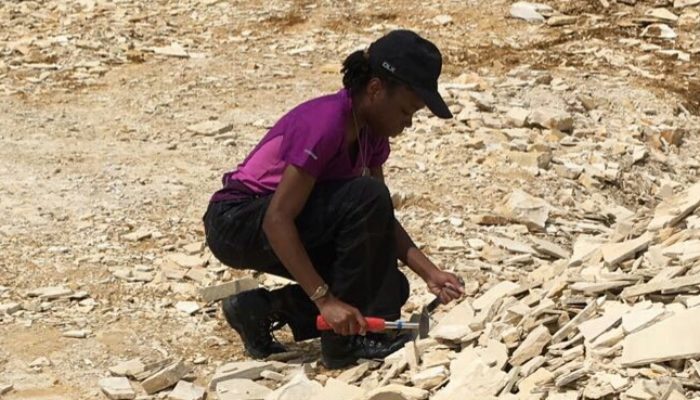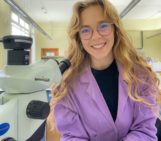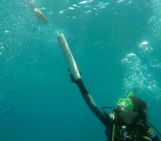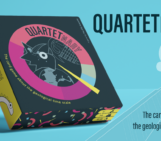
Hi Nadine, thanks for speaking with us today, can you tell us a little bit about your background and how you got to where you are now?
Thank you for inviting me! I’m a geologist and the Assistant Curator of Fossil Mammals at the Natural History Museum, London. I studied MSci Geology at University College London and I absolutely enjoyed the subject. It was really interesting to learn about the geological processes operating inside and on the Earth, and how these processes lead to rock/mineral formation, volcanism and environmental changes. The highlight of my degree was having the chance to explore beautiful landscapes during fieldwork in several countries.
I chose geology because it’s a topic that combines multiple aspects of science (chemistry, physics, biology) and human issues. During my degree I spent a lot of time working as a Collections Assistant at UCL: I worked with 20th century physics instruments in the Science Collections; rocks, minerals and fossils in the Earth Sciences Collections; and zoological specimens at the Grant Museum. After I left UCL, I became a Fossil Mammals volunteer at the NHM. This later led to my current role, which involves documenting the collections, providing access to specimens for researchers and PhD students, and participating in outreach activities. Due to the ongoing pandemic situation, I’m currently working at home doing digitisation tasks and responding to enquiries remotely.
One of the things that you are very well known for is your science communication work on Twitter, particularly through the #365Minerals campaign and your online game #AreYouSiO2. What inspired you to start sharing your love of mineralogy on twitter?
I really enjoyed playing Twitter games such as #NameThatTrack by @Lisavipes and #CougarOrNot by @drmichellelarue. However, back in 2017, I noticed that there were no geology-based games, so I decided to start #AreYouSiO2. I think it’s a fun way to get people to engage and learn about how minerals are used in everyday life, how they form, why they come in a multitude of shapes and colours, etc.
Another reason is that it’s a great way to share my huge collection of photos! I’ve taken thousands of photos of minerals in museums and during fieldwork, so instead of simply tweeting “This is a piece of quartz”, I decided to make it more fun and interactive. This was also the idea behind #365Minerals, which was inspired by the #365Papers hashtag; I wanted to share lots of interesting facts and photos, and give people something to look forward to each day!
AreYouSiO2 is a very popular game, but given how much you like a range of minerals, why did you decide to focus it on quartz?
I chose quartz because it’s my favourite mineral. It’s also the most common mineral on the Earth’s surface, has a wide range of industrial uses, and even though it has such a simple formula (SiO2), it can form so many different shapes and colours. This made it the perfect choice for a mineral guessing game because I could choose challenging examples that will get people to really think about their answers, and I could demonstrate the importance of quartz in everyday life.
What is your favourite quartz related fact? You must know so many by now!!
It has to be the fact that if you’re wearing a watch, you probably have a little piece of quartz on your wrist! That’s because it’s used as an oscillator in most watches and clocks to regulate time. Quartz is piezoelectric which means that when it’s squeezed, it generates an electric current. The reverse is also true. If you pass an electric current through quartz, it will vibrate at 32,768 Hz (32,768 times a second). The circuit in a watch counts the number of vibrations to generate a regular electrical pulse at a rate of one per second. This then powers the gears in an analogue watch or the LCD display in a digital watch.
Thank you for sharing your story with us Nadine, what is coming up next for you?
For a while now I’ve been working on converting my MSci dissertation on Palaeoproterozoic stromatolites into a scientific paper. At the moment on I’m working on the corrections.
Interview by Hazel Gibson, EGU Communication Officer.



